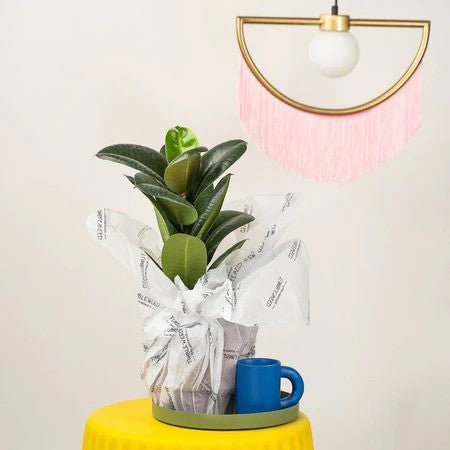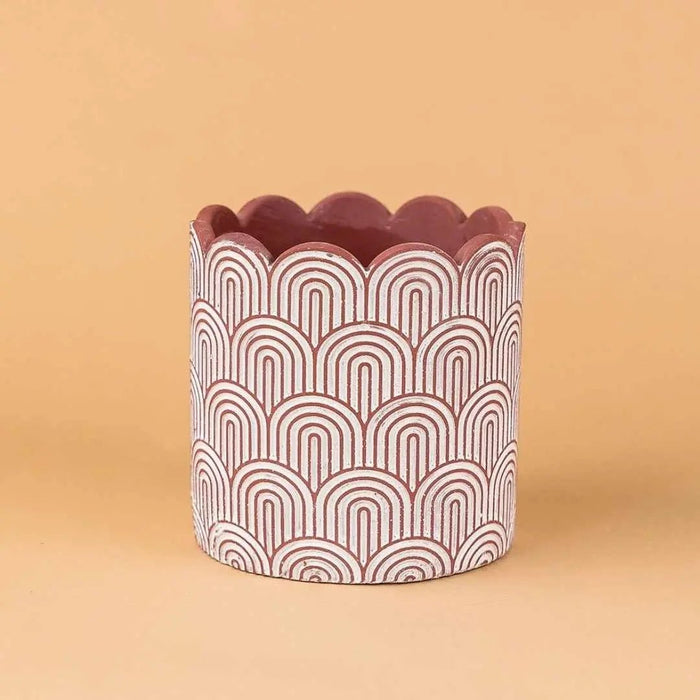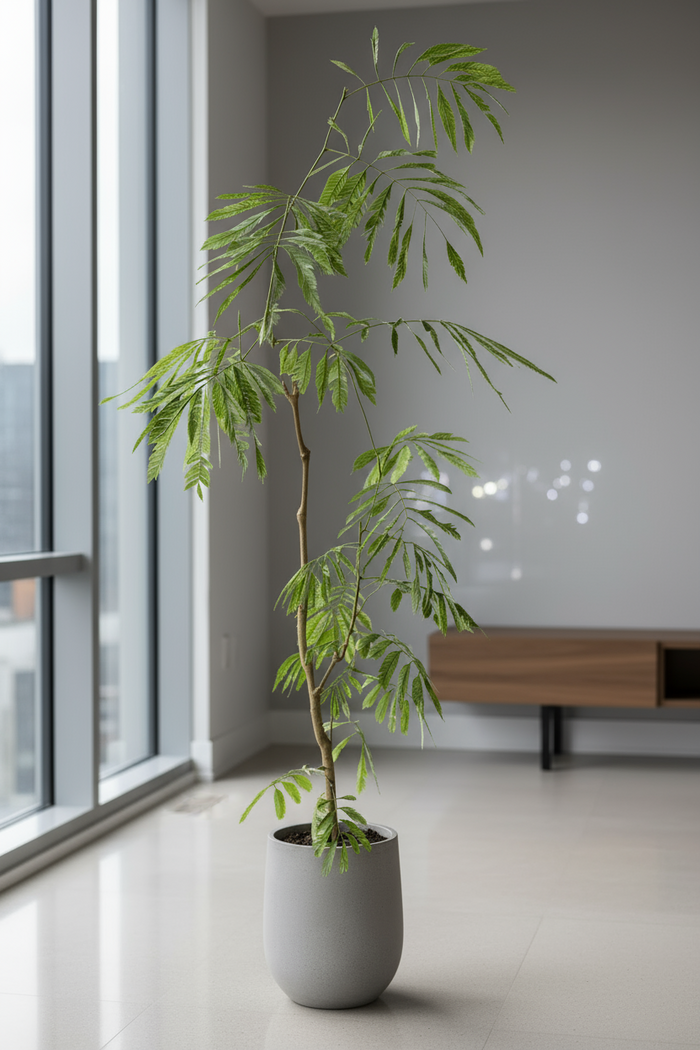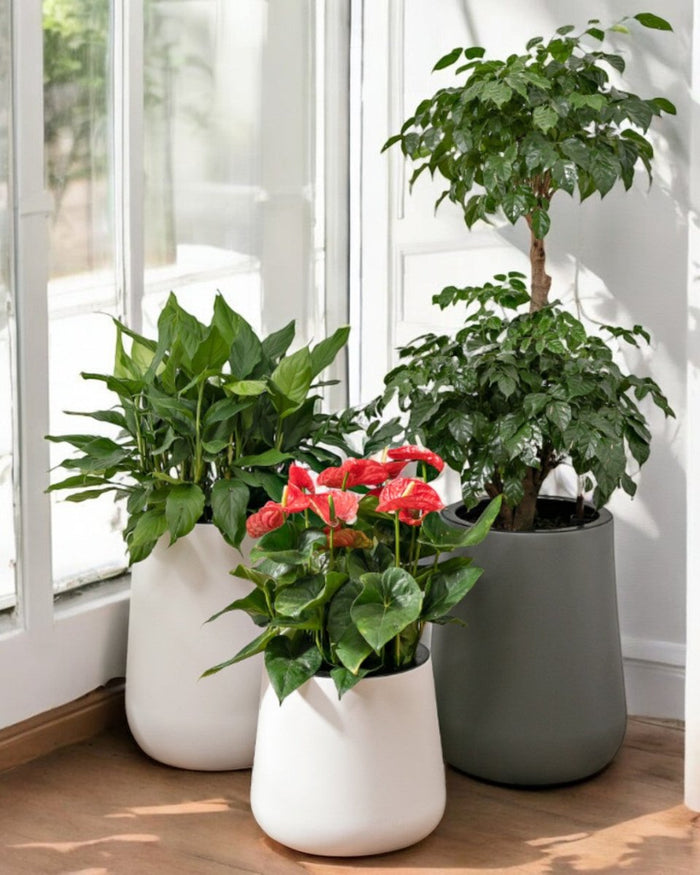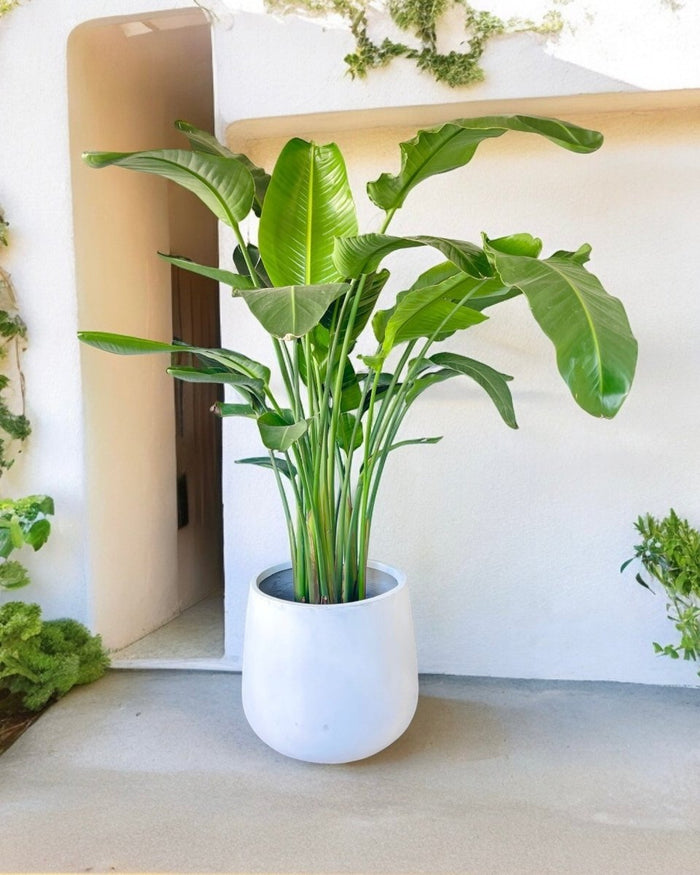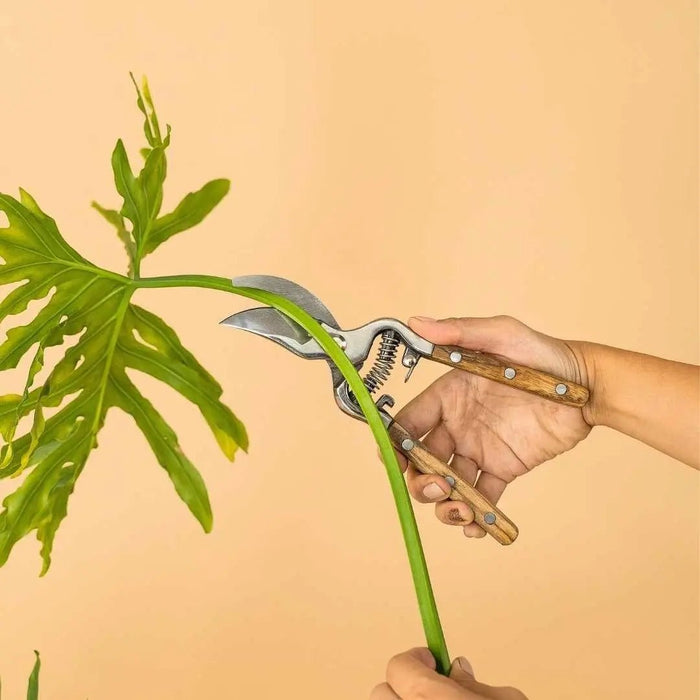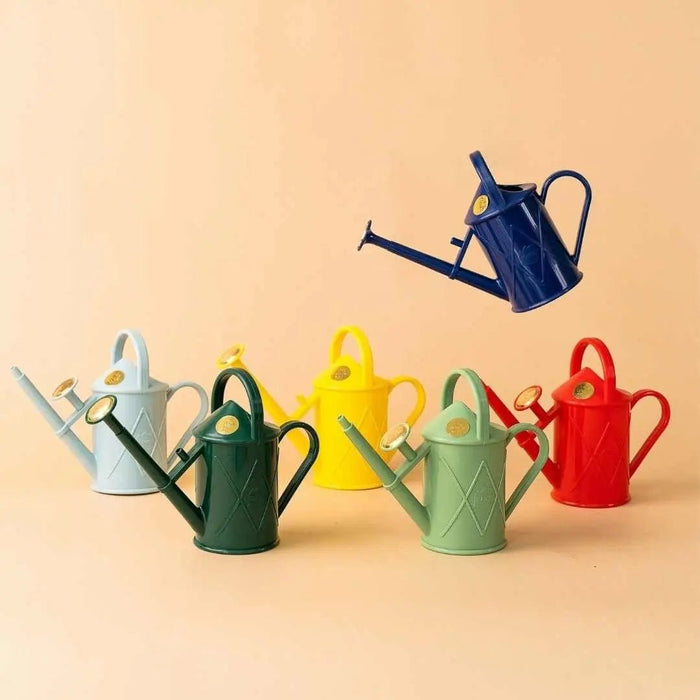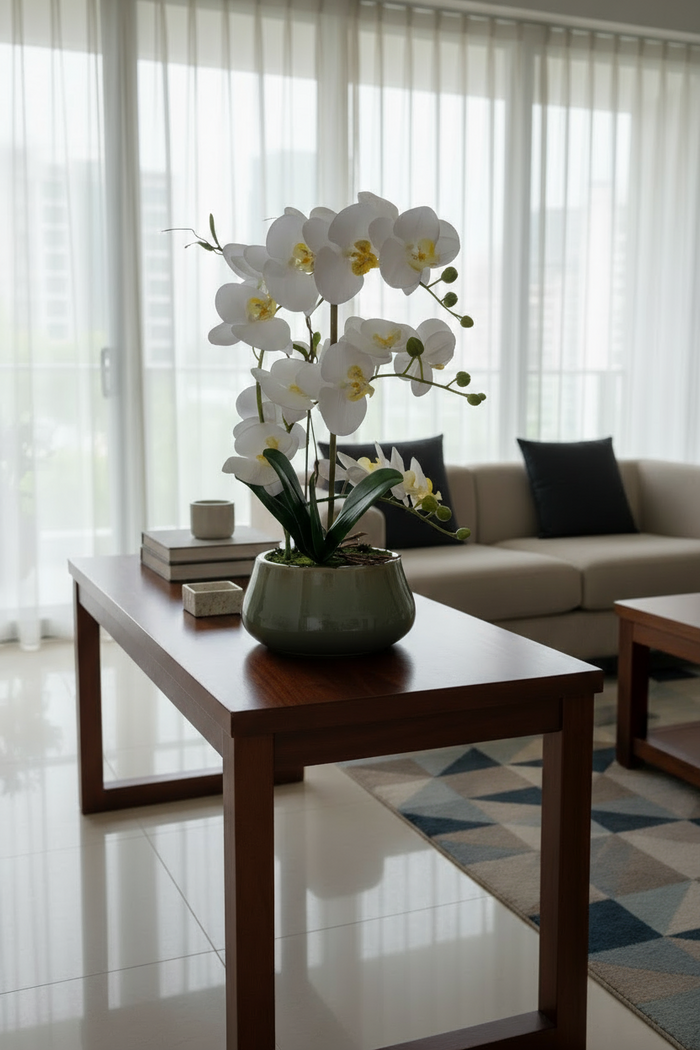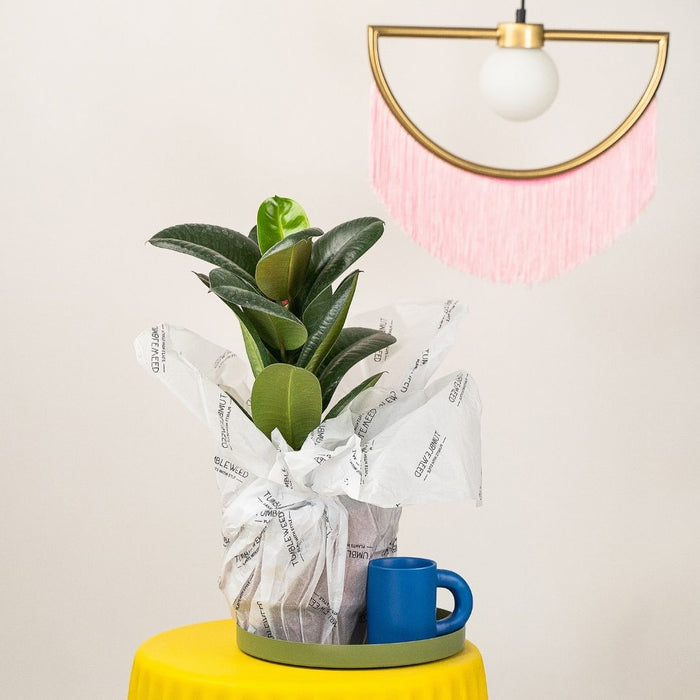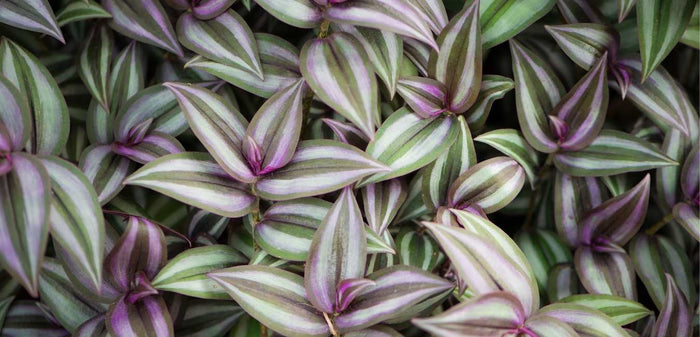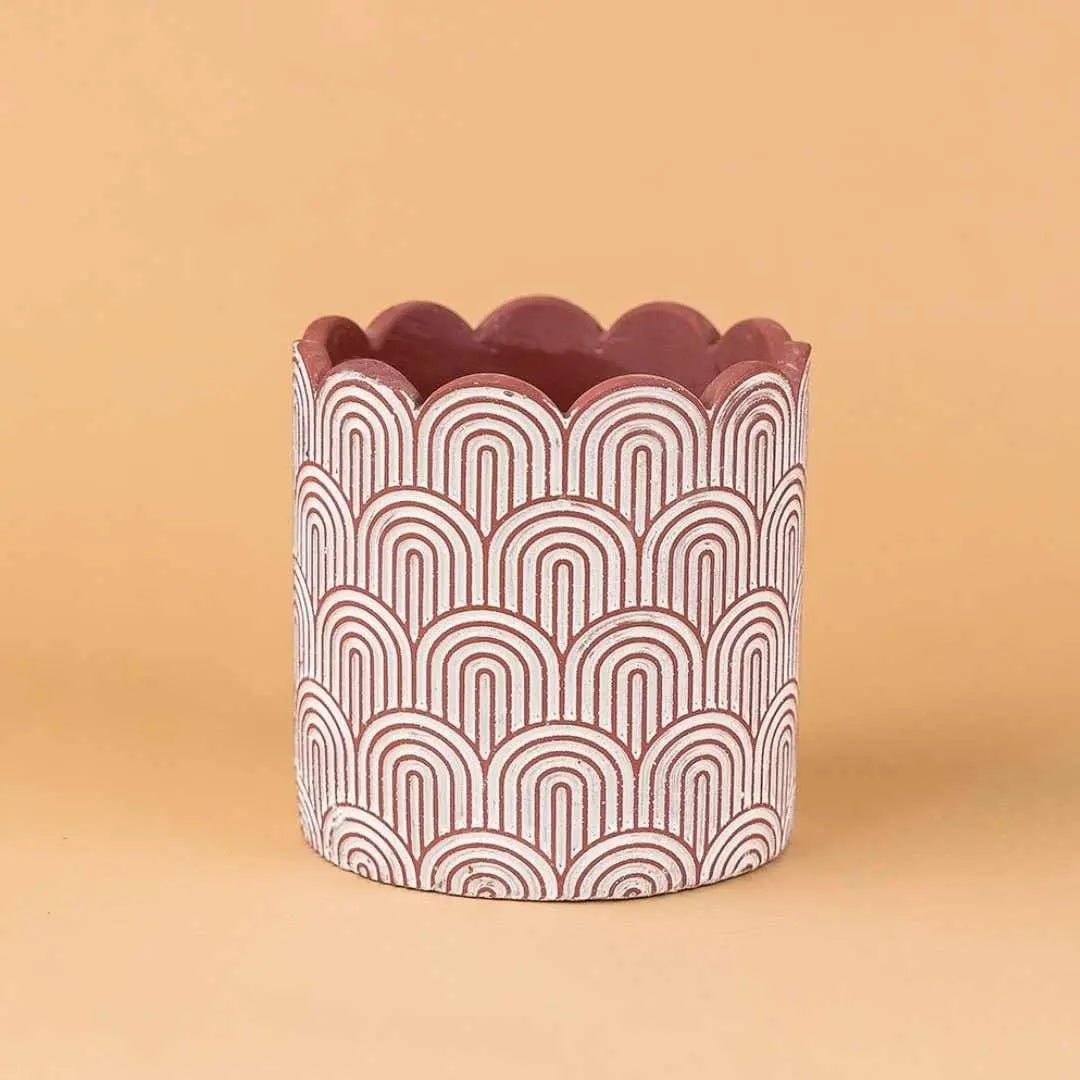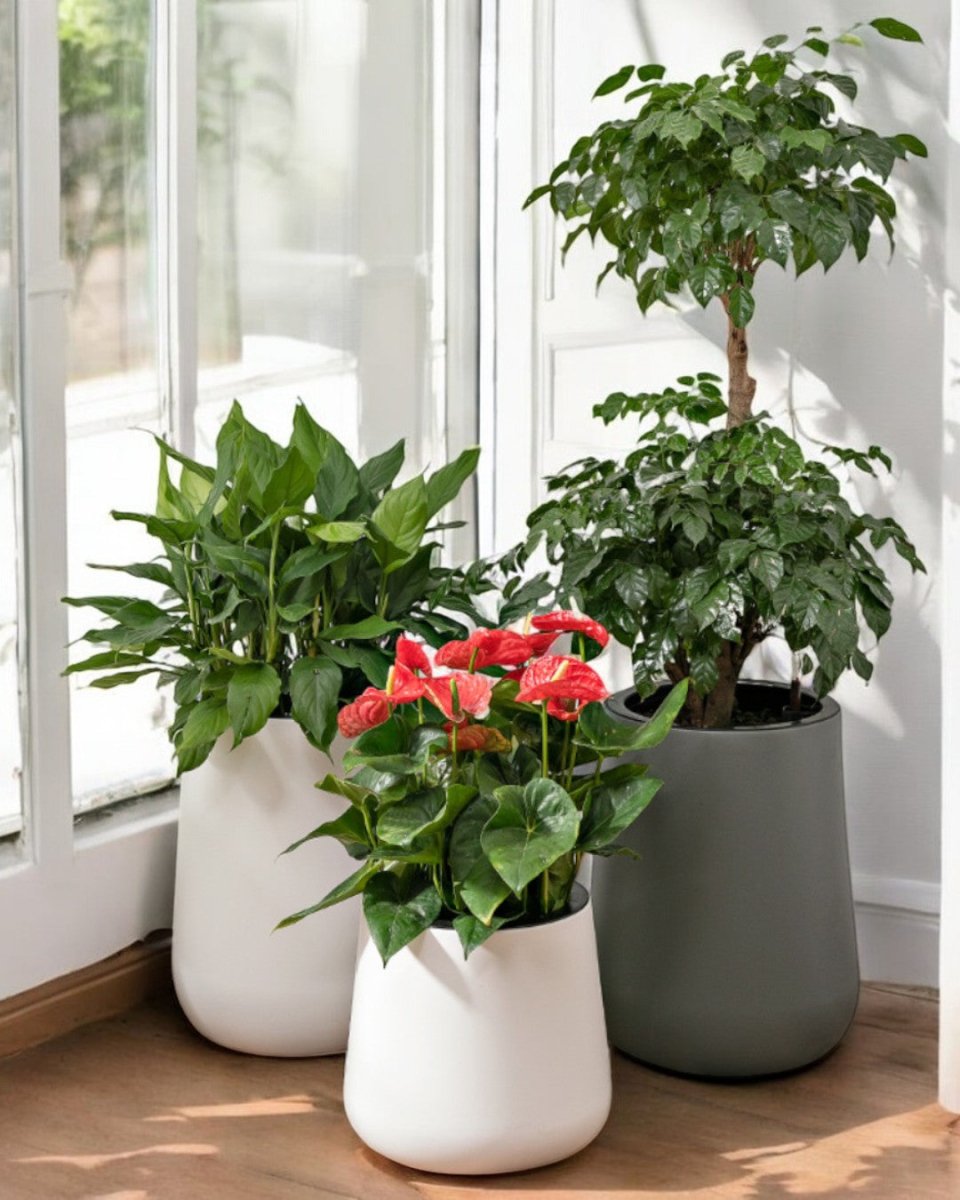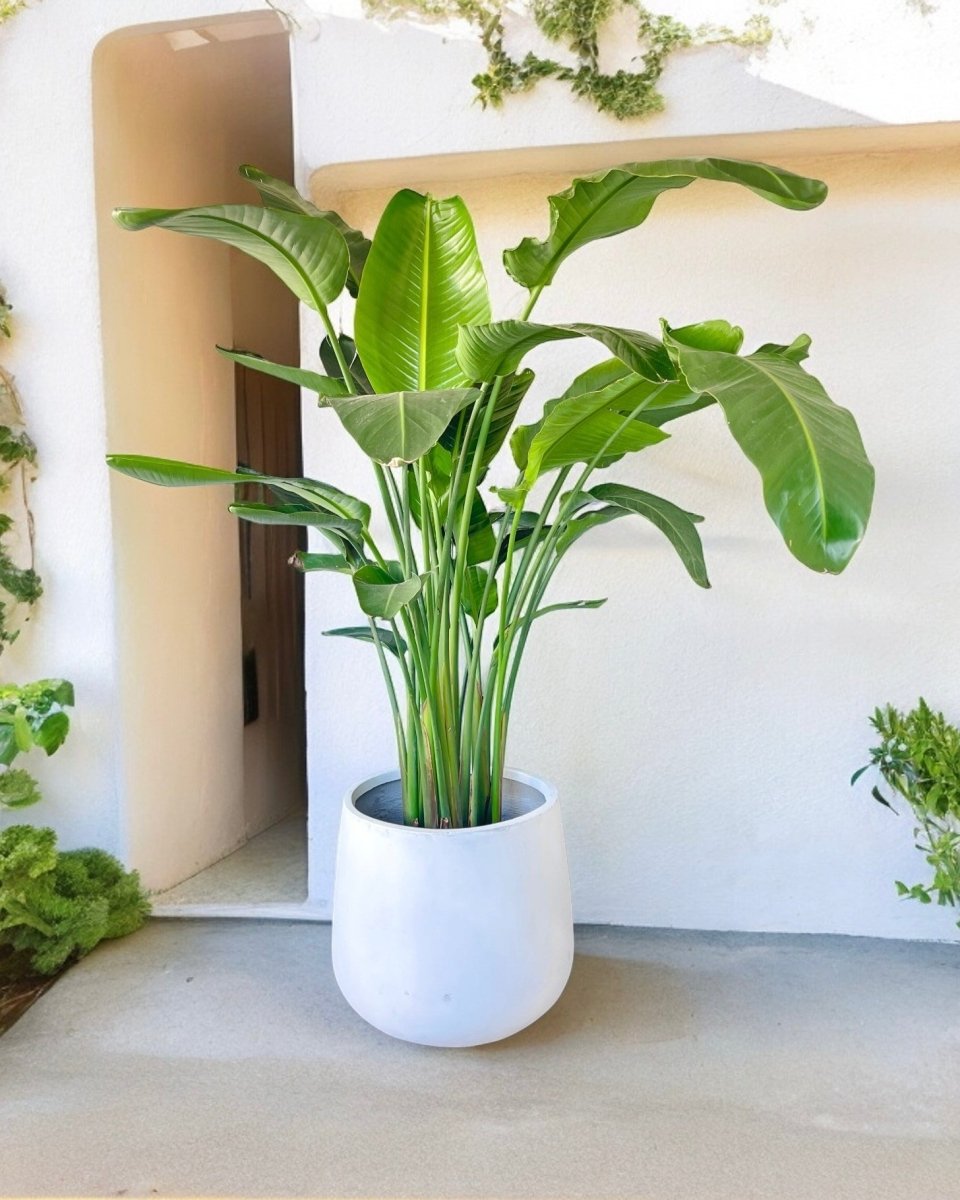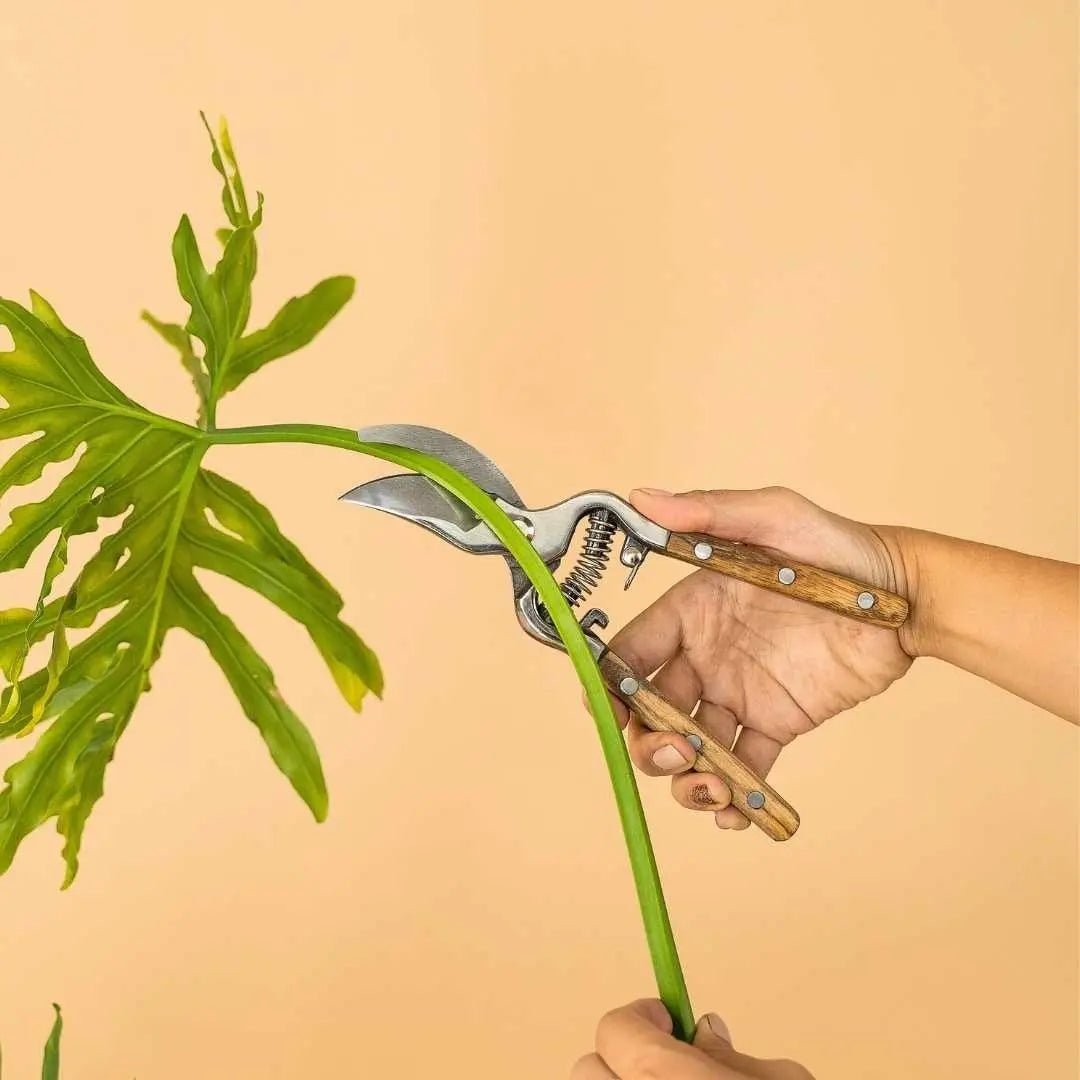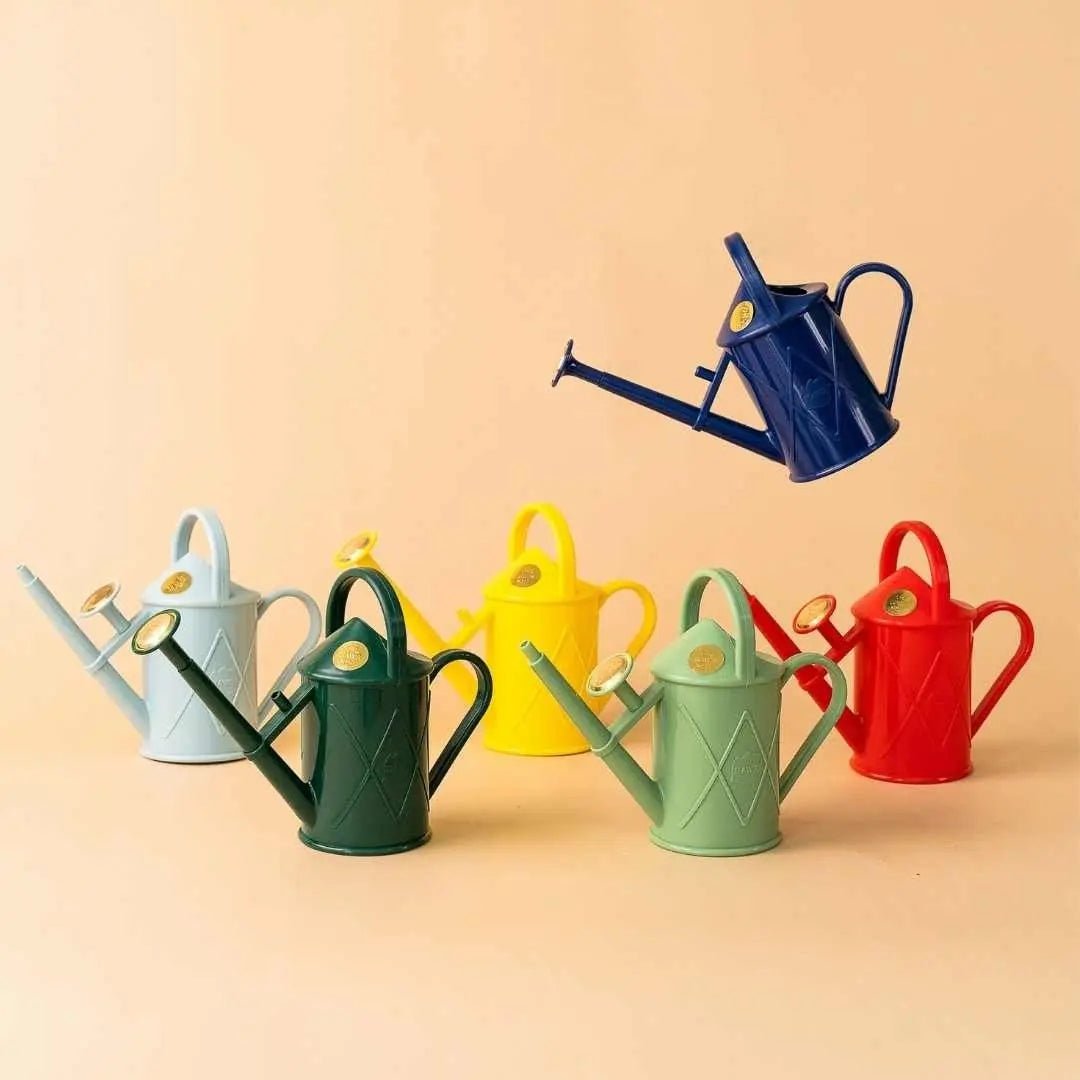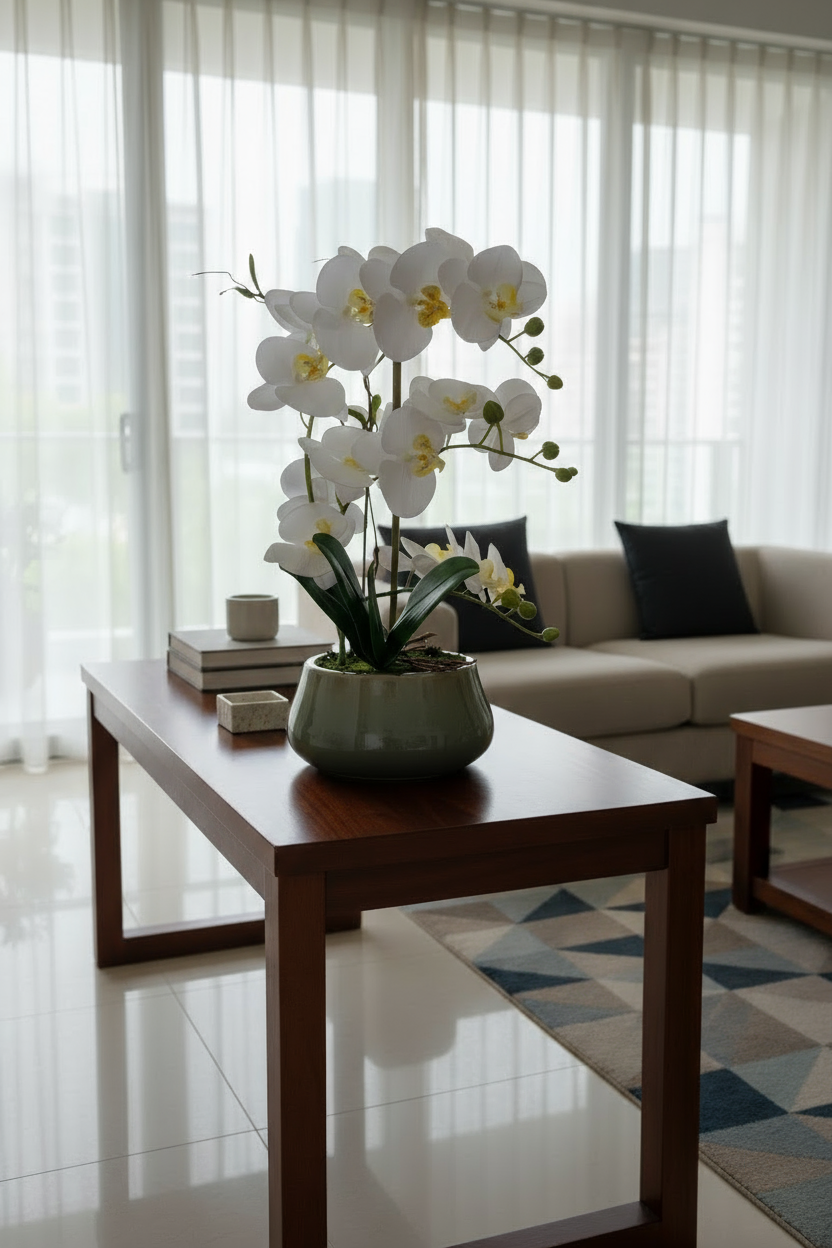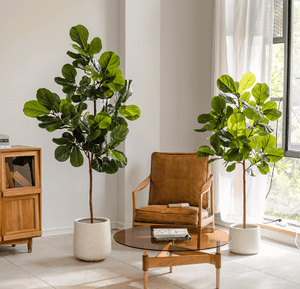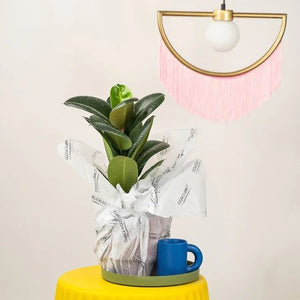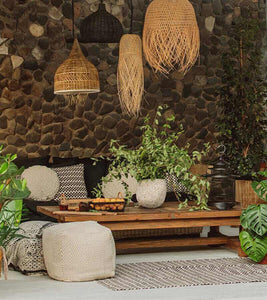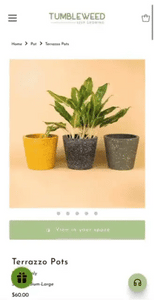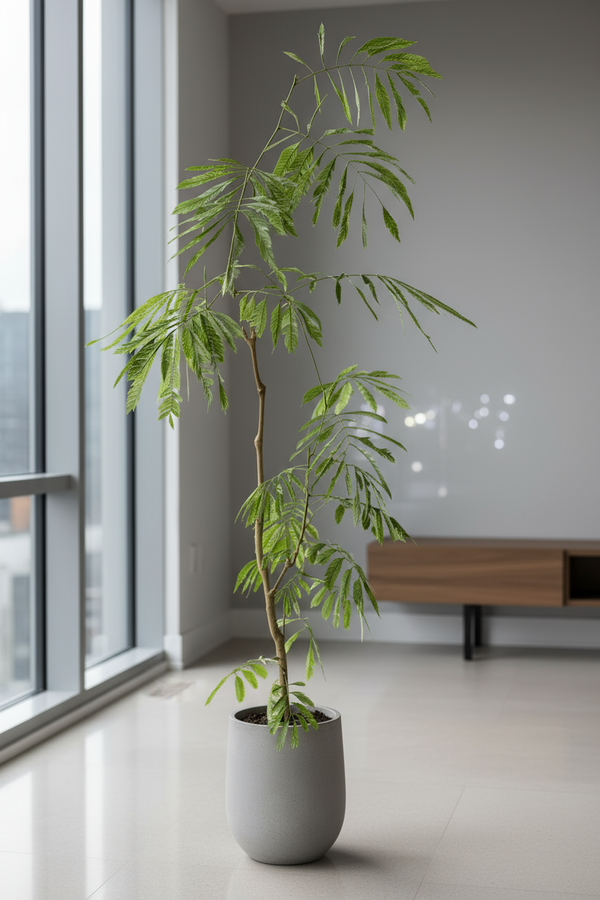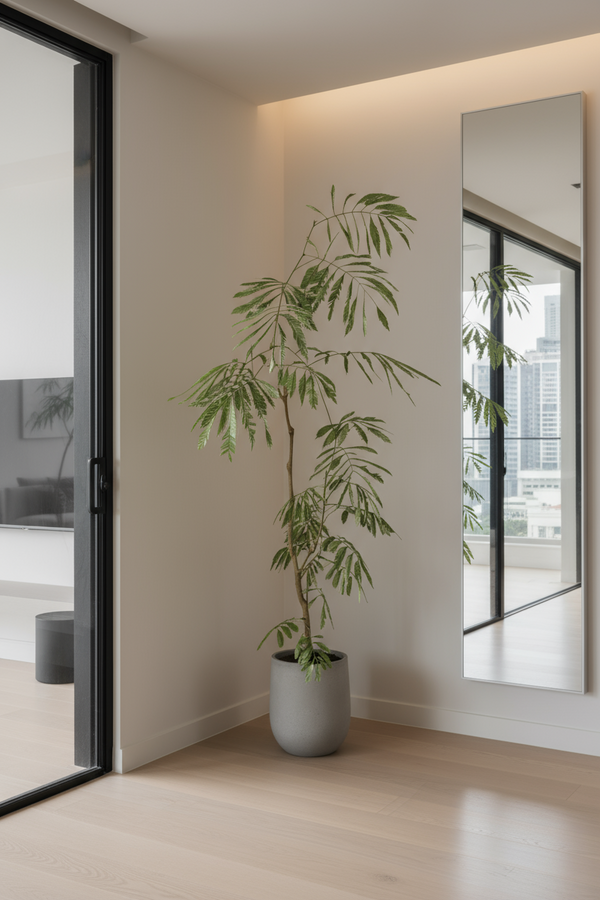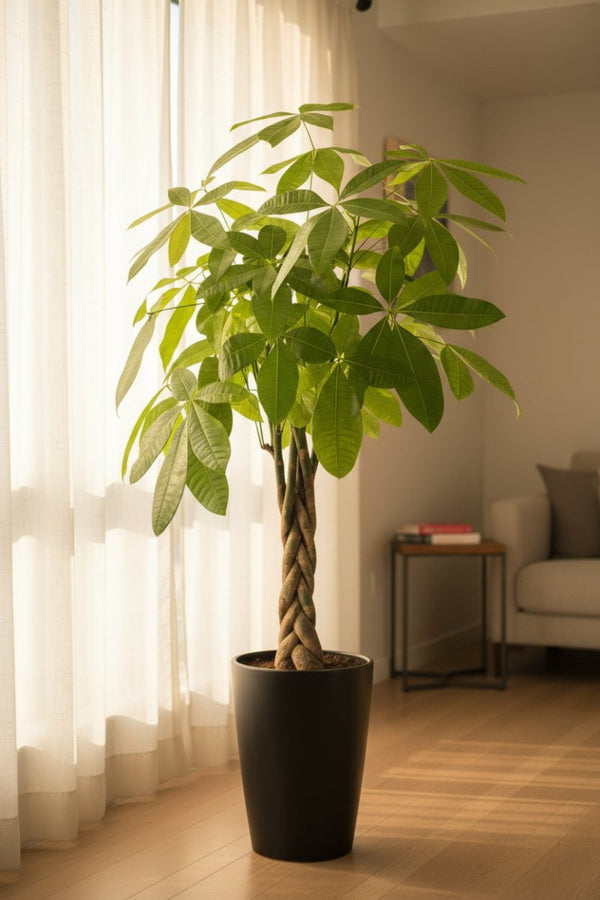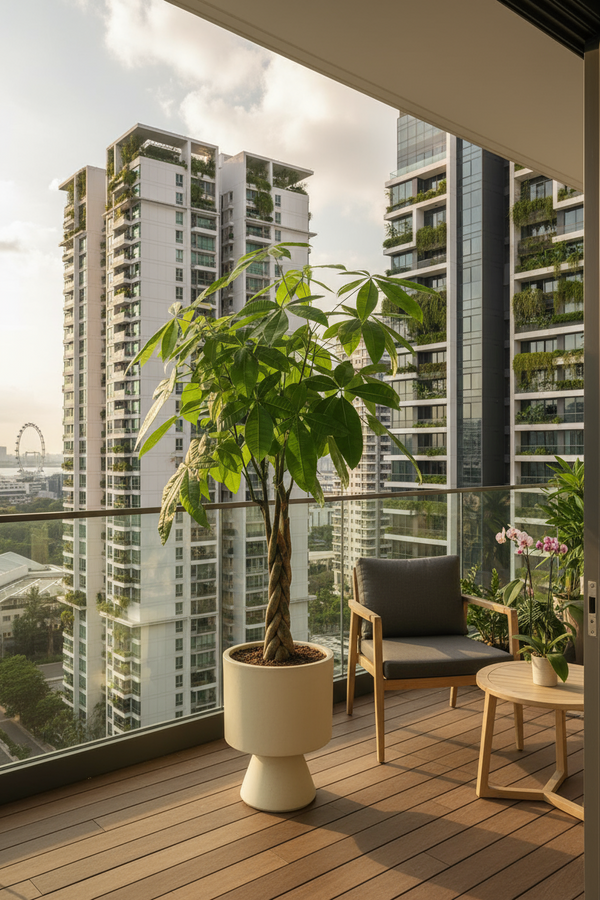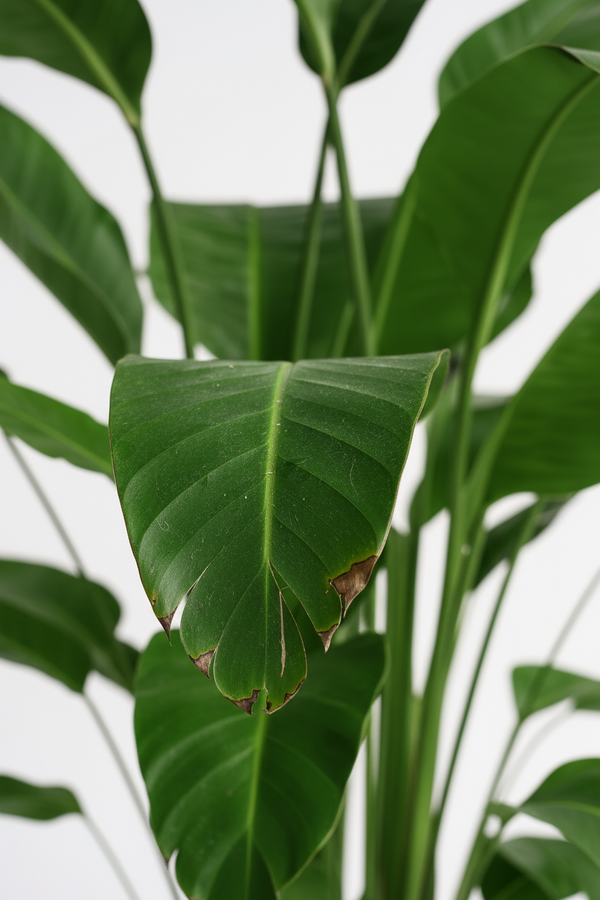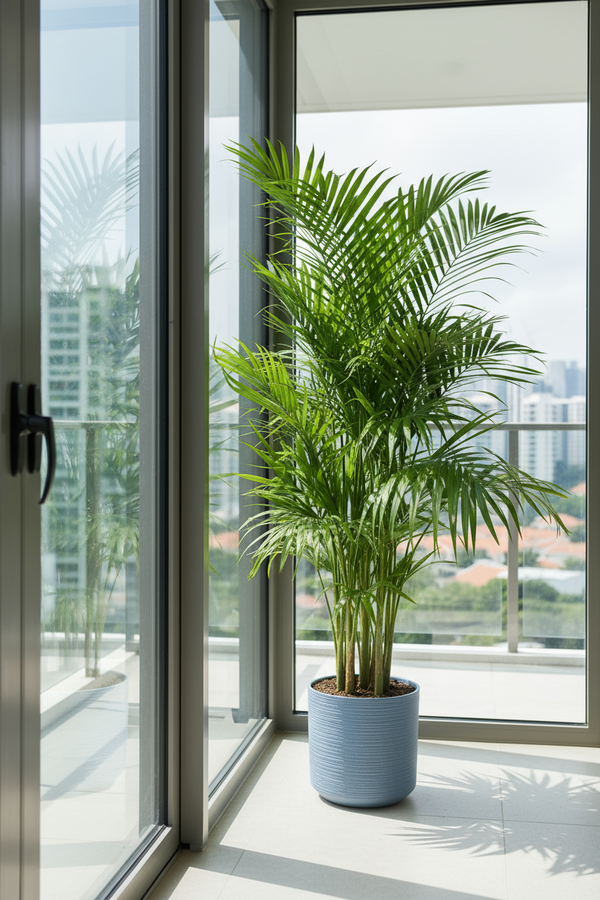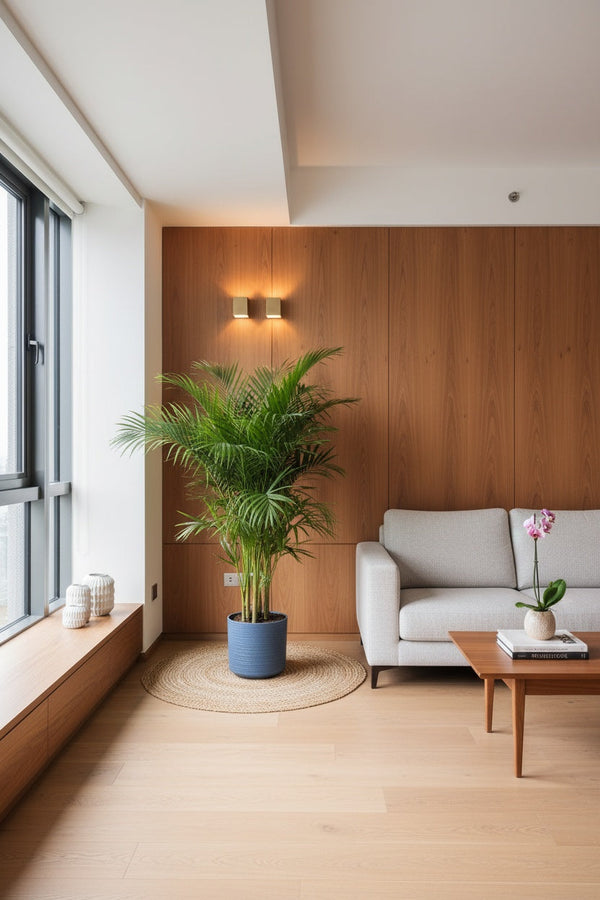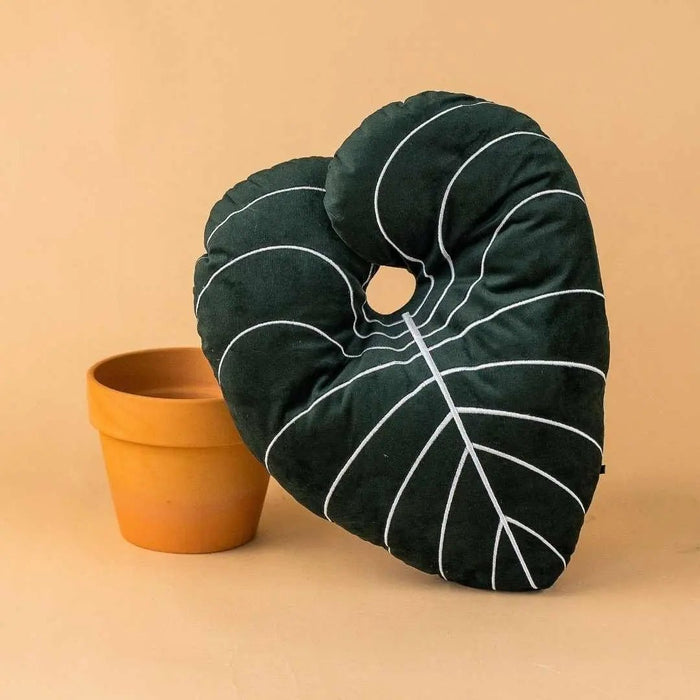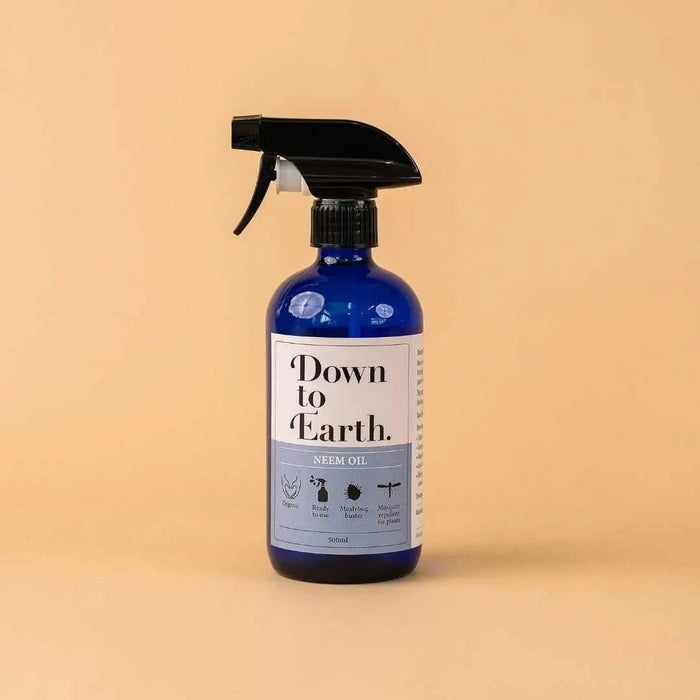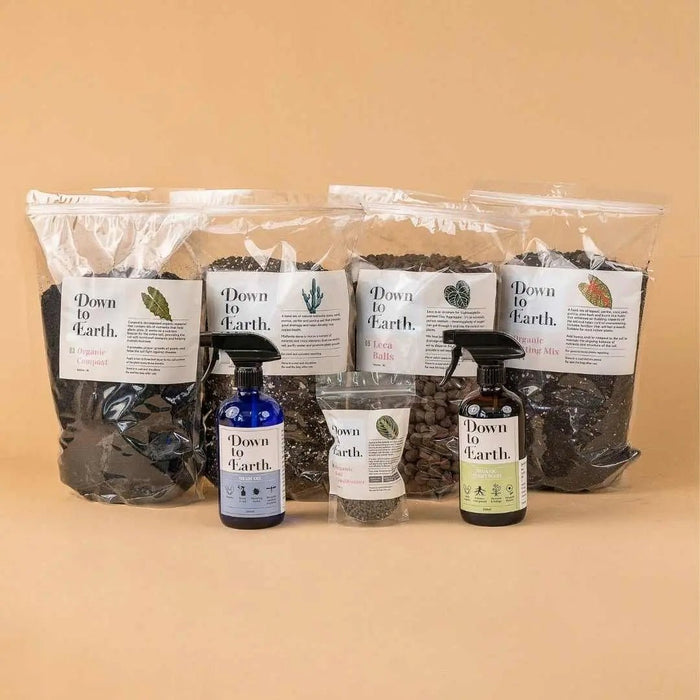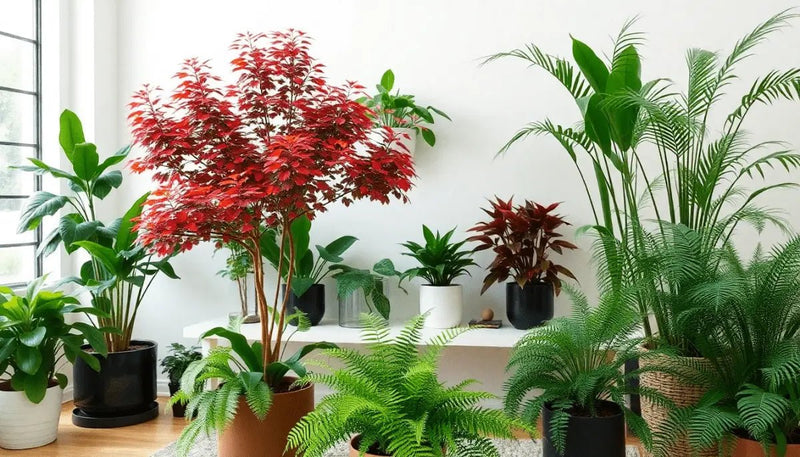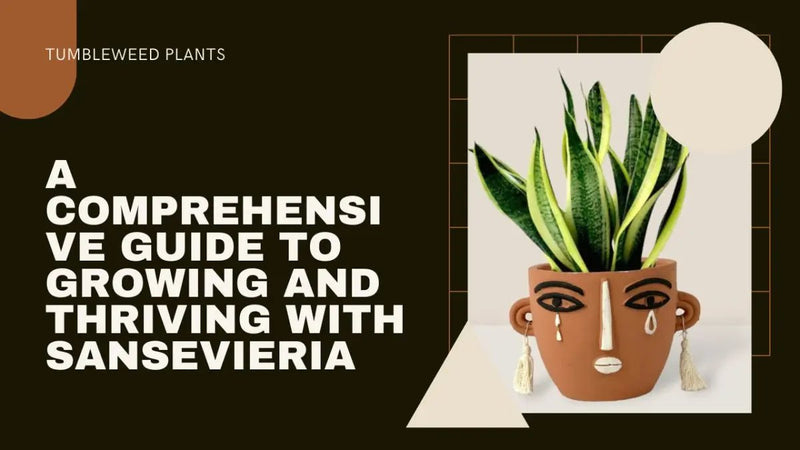10 Easy Houseplants That Anyone Can Keep Alive
Posted on March 21 2025
Introduction: Transforming Your Home with Easy-to-Care-for Houseplants
Houseplants have the power to elevate any space, bringing life and vibrancy while enhancing decor and promoting well-being. Adding greenery to the home creates a serene and inviting atmosphere, but concerns about maintenance can deter many from embracing indoor plants. However, not every houseplant requires meticulous care—a variety of options exist for those with limited experience or a busy lifestyle. Choosing easy-to-care-for plants allows individuals to enjoy all the benefits of greenery without the stress of constant upkeep.
The introduction of hassle-free houseplants can be an impactful step for anyone seeking to personalize their home or workspace. These plants often adapt well to diverse environments, thriving in varied light conditions and requiring minimal attention to flourish. By selecting low-maintenance options, individuals can enjoy the beauty of nature indoors without worrying about complex watering schedules or specific fertilization needs.
Moreover, indoor plants contribute to improved indoor air quality by filtering pollutants and releasing oxygen, a fact supported by research. The presence of greenery may also reduce feelings of stress and boost overall mood. Incorporating plants into living spaces not only enhances aesthetics but promotes a healthier and more enjoyable environment.
For those new to plant care, focusing on resilient species fosters confidence in their ability to nurture flora. This selection often includes plants known for their durability, such as snake plants or pothos, which tolerate neglect and recover quickly. Such choices ensure even beginners can experience success, making houseplants an accessible addition for everyone.
By exploring easy-to-care-for options, individuals can rethink their approach to plant ownership and enjoy the transformative benefits without the demands of expert care. Whether placed in living rooms, kitchens, or offices, these plants provide an effortless pathway to enriching interiors with natural charm and vitality.
Why Choose Low-Maintenance Houseplants?
Low-maintenance houseplants offer an ideal solution for individuals with busy schedules, limited gardening experience, or those simply seeking the aesthetic and health benefits of greenery without the hassle of constant upkeep. These plants are resilient, adaptable, and thrive with minimal effort, making them perfect for a wide range of environments, including homes, offices, and small apartments.
For beginners or those with a history of struggling to keep plants alive, low-maintenance options act as a confidence booster. These plants often feature forgiving growth habits and require less frequent watering, allowing them to thrive even in situations where a consistent care routine might be difficult to maintain.
Choosing these types of houseplants also supports healthier indoor environments. Certain species of low-maintenance plants, such as the Snake Plant or Peace Lily, are known to purify air by removing toxins like formaldehyde and benzene, thus enhancing air quality with very little effort. Their ability to survive in varying levels of light—whether low-light corners or sunlit windowsills—adds to their versatility.
Financial considerations also play a role. Maintaining labor-intensive plants often involves frequent replacement or investment in fertilizers, tools, and pest treatments. Low-maintenance plants reduce these ongoing costs by requiring minimal resources while still offering long-term beauty and functionality.
For travelers, pet owners, or parents, plants that thrive under minimal supervision ensure peace of mind. Many of these varieties are known for their resistance to neglect, resilience to pests, and non-toxic properties, making them a practical choice for diverse households. By removing the pressure to micromanage plant care, they allow individuals to enjoy vibrant greenery without compromising their schedules or budgets.
The Benefits of Having Houseplants in Your Space
Incorporating houseplants into indoor environments positively impacts mental, emotional, and physical well-being. Plants provide more than decorative appeal, offering a range of benefits that enhance the overall quality of life within a living or working space.
Improved Air Quality
Houseplants are natural air purifiers, as many types can filter toxins such as formaldehyde, benzene, and carbon monoxide while simultaneously increasing humidity levels. Through the process of photosynthesis, plants absorb carbon dioxide and release oxygen, leading to fresher air and a healthier environment.
Stress Reduction and Mental Clarity
Studies indicate that the presence of greenery helps lower stress levels and promotes relaxation. Interaction with plants—whether tending to them or merely observing their growth—may reduce feelings of anxiety. Houseplants also have been shown to enhance concentration and productivity, making them ideal companions for office spaces or study areas.
Enhanced Aesthetic Appeal
The visual presence of houseplants brings texture, color, and vibrancy to a space, creating a welcoming and calming atmosphere. They can complement interior design styles and serve as focal points in any room, adding an organic touch that enriches spatial dynamics.
Boosted Humidity Levels
During transpiration, plants release moisture into the air, which can help maintain healthier humidity levels indoors. Increased humidity reduces symptoms such as dry skin, sore throats, and respiratory discomfort caused by overly dry air, particularly in climates with harsh winters or during heavy air conditioning usage.
Supporting Eco-Friendly Living
Houseplants promote sustainability by encouraging the use of natural elements in home or office decor. Their long lifespan, especially in species that are easy to maintain, aligns with principles of low waste and efficient resource use.
By consistently contributing to a healthier, more enjoyable indoor environment, houseplants make tangible enhancements to daily life. The versatility and low-maintenance nature of certain varieties make these benefits accessible to individuals across skill levels.
1. Snake Plant: The Indestructible Air Purifier
The snake plant, scientifically known as Sansevieria trifasciata, is renowned for its durability and its ability to purify indoor air. Often referred to as “mother-in-law’s tongue” due to its upright, sword-like leaves, this houseplant thrives on neglect, making it an ideal choice for beginners or anyone with a busy lifestyle.
The snake plant’s impressive hardiness stems from its ability to tolerate a wide range of light conditions. While it thrives in indirect sunlight, it can also withstand low-light environments and even fluorescent office lighting. Additionally, it requires minimal watering, as its thick, succulent leaves store water effectively, allowing it to survive extended periods of drought. Overwatering, however, should be avoided, as this can lead to root rot—a common issue for novice plant owners.
One of the standout characteristics of the snake plant is its ability to improve indoor air quality. It is among the few plants that convert carbon dioxide into oxygen at night, making it an excellent addition to bedrooms. Furthermore, it filters toxins such as formaldehyde, benzene, and trichloroethylene from the air, contributing to a healthier living environment.
The snake plant requires little maintenance. Occasional wiping of its leaves with a damp cloth is sufficient to keep them free of dust, ensuring optimal photosynthesis. It is also resistant to pests, further cementing its reputation as one of the most forgiving houseplants available.
Whether placed in a modern apartment, a traditional home, or an office space, the snake plant excels as a low-maintenance, air-purifying companion. Its architectural form adds a touch of elegance, making it as functional as it is visually appealing.
2. Pothos: The Perfect Choice for Beginners
Pothos, also known as Devil’s Ivy, is widely celebrated for its low-maintenance nature and striking appearance, making it an ideal plant for beginners. Its cascading vines and heart-shaped leaves, available in a variety of color patterns such as golden, marble, and neon, can instantly elevate the aesthetic of any indoor space. This plant thrives in diverse environments, adapting to a range of light conditions and care routines with ease.
One of the most appealing aspects of pothos is its tolerance for low light. While it flourishes in bright, indirect sunlight, it can also survive in dim corners or artificial lighting. Its drought resistance is another significant advantage; pothos can go weeks without water, bouncing back quickly after a missed watering. Overwatering, however, should be avoided as it can lead to root rot.
When it comes to care requirements, pothos offers simplicity. It thrives in standard potting soil with good drainage and does not require frequent fertilization; feeding it once every month during the growing season is sufficient. For propagation enthusiasts, pothos is exceptionally forgiving. Cuttings can grow roots in water or soil, making it easy to expand your collection or share with others.
Beyond its beauty and resilience, pothos contributes air-purifying benefits by removing indoor pollutants such as formaldehyde and carbon monoxide. Regular pruning can help maintain a tidy appearance and encourage fuller growth, while its ability to trail or climb adds to its versatility in decor options.
For those new to houseplants, pothos offers an optimal balance of hardiness and visual appeal, providing a rewarding introduction to plant care. Its adaptability and forgiving nature set it apart as one of the easiest houseplants to keep alive and thriving.
3. Spider Plant: A Resilient and Adaptive Favorite
The Spider Plant (Chlorophytum comosum) is renowned for its ability to thrive under various conditions. Its striking, arching green leaves often feature contrasting white stripes, making this plant an aesthetically pleasing addition to any space. It is favored by houseplant enthusiasts and beginners alike due to its exceptional resilience and adaptability.
Spider Plants are tolerant of a wide range of lighting conditions. While they flourish in bright, indirect light, they can also survive in areas with low light, making them suitable for dim corners of a home or office. Direct sunlight, however, should be avoided as it may scorch their delicate leaves. Temperature adaptability further adds to their appeal, as they perform well in both cooler and warm indoor environments.
In terms of watering, Spider Plants are forgiving. They prefer to be watered when the top inch of soil feels dry, but they generally recover well from occasional overwatering or underwatering. Their thick, tuberous roots store moisture, enabling them to endure short periods of neglect. A pot with good drainage is recommended to prevent root rot, as standing water can be harmful.
One notable characteristic of Spider Plants is their ability to produce “spiderettes” or baby plants. These offshoots extend from the parent plant on slender stems and can be propagated easily. Simply detach them and place the spiderettes in soil or water to root, allowing new plants to grow effortlessly. This quality makes Spider Plants a practical choice for anyone looking to expand their indoor greenery.
Additionally, Spider Plants are excellent for improving air quality. NASA studies have revealed their effectiveness in removing toxins like carbon monoxide, formaldehyde, and benzene from indoor environments, contributing to healthier and cleaner air.
With minimal care requirements and the ability to adapt to different conditions, Spider Plants exemplify versatility. Their combination of aesthetic appeal, hardiness, and health benefits positions them as an enduring favorite for indoor plant enthusiasts.
4. ZZ Plant: Thriving on Minimal Attention
The ZZ plant (Zamioculcas zamiifolia) is an exceptional choice for those seeking a hardy, low-maintenance houseplant. Celebrated for its thick, waxy, and glossy leaves that naturally shine with minimal care, this plant can elevate the appearance of any indoor space. Native to eastern Africa, the ZZ plant is well-adapted to surviving in low-light and drought-like conditions, making it perfect for beginners and busy individuals.
One of the key characteristics of the ZZ plant is its resilience. It thrives in indirect light but can tolerate low-light corners, making it ideal for offices, bedrooms, or spaces without much natural sunlight. However, it enjoys moderate light when available, which allows it to grow more robustly. The ZZ plant also demonstrates remarkable drought resistance due to its rhizomes—storage organs in its roots that retain water. This feature allows it to go several weeks without watering, as the plant can draw on these reserves to stay healthy.
When watering, less is more. Overwatering can quickly lead to root rot, so it is essential to let the soil dry out completely between waterings. An appropriate watering schedule could involve doing so every two to three weeks, depending on the indoor climate. Furthermore, the ZZ plant is undemanding when it comes to humidity and can easily adapt to most indoor environments.
This plant is also known for its air-purifying qualities. According to studies, the ZZ plant can remove common toxins like benzene and xylene, contributing to improved indoor air quality. Additionally, its slow growth rate means that it rarely requires repotting or excessive trimming. However, care should be taken to handle it responsibly, as its leaves are mildly toxic if ingested, making it less suitable for homes with curious pets or young children.
5. Peace Lily: Elegance Meets Low Maintenance
The Peace Lily (Spathiphyllum) is an ideal option for those seeking a combination of visual refinement and minimal care requirements. This tropical houseplant features glossy, deep green leaves and stunning white spathes, often mistaken for flowers, giving it an understated elegance that complements any indoor space.
Peace Lilies thrive in a variety of lighting conditions, making them suitable for low-light environments. While they prefer bright, indirect light, they can also tolerate shadier spots, making them a practical choice for areas without direct sunlight. Their ability to adapt to varying conditions contributes significantly to their reputation as a resilient houseplant.
Watering Peace Lilies is straightforward. Their soil should be kept slightly moist but never soggy to avoid root rot. One way to identify when the plant needs water is by observing its leaves; they tend to droop slightly when thirsty, providing a clear, natural indicator. However, overwatering should be avoided as it is one of the few conditions that might hinder their growth.
Regarding temperature and humidity, Peace Lilies flourish in warm, humid environments, making them perfect for typical indoor conditions. They are content with temperatures between 65 to 80°F and benefit from occasional misting to maintain adequate humidity.
Peace Lilies also contribute to indoor air quality. Known for their air-purifying qualities, they can remove toxins like benzene and formaldehyde, making them both decorative and functional. Regular care involves wiping dust off their leaves and occasionally feeding them with a balanced fertilizer every 6 to 8 weeks during their active growth phase.
With their minimal demands and undeniable grace, Peace Lilies are a top choice for plant enthusiasts of all experience levels. Their timeless aesthetic makes them a favorite in homes and offices alike.
6. Aloe Vera: Beauty and Utility in One Plant
Aloe vera, a hardy and versatile succulent, is widely cherished not only for its striking, fleshy leaves but also for its practical benefits. Its thick, pointed foliage, often adorned with subtle green hues or white speckles, adds a touch of elegance to any indoor space. Known for its adaptability, aloe vera is an ideal choice for beginners and busy individuals alike.
This resilient plant thrives in bright, indirect sunlight and requires very minimal watering. It can tolerate extended periods of drought, as its leaves store water efficiently. When watering, it is crucial to ensure the soil is allowed to dry out completely between sessions, as overwatering can lead to root rot. A well-draining potting mix, such as a cactus or succulent blend, is essential for maintaining healthy growth.
What sets aloe vera apart is its dual role as both a decorative item and a therapeutic resource. The gel inside its leaves contains natural compounds that are renowned for their skin-soothing properties. It has been used for centuries to treat sunburns, minor cuts, and skin irritations. Harvesting the gel is straightforward: simply snip a mature leaf near its base, slice it open, and scoop out the translucent interior.
Aloe vera’s compact size makes it suitable for desks, windowsills, or small shelves. While it prefers warmer temperatures, it can tolerate a range of indoor conditions if kept away from cold drafts. Regularly dusting its leaves will keep them clean and allow the plant to photosynthesize effectively. Additionally, aloe vera rarely requires fertilization, though an occasional dose of succulent or houseplant fertilizer during the growing season can support its health.
This unassuming yet highly functional plant requires little effort to thrive while offering significant aesthetic and practical value. Its combination of ease, beauty, and usefulness makes it a standout option for any indoor gardener.
7. Dracaena: A Stylish, Hardy Option for Any Room
Dracaena is a versatile and elegant houseplant that brings an instant touch of sophistication to any indoor space. Known for its striking foliage and impressive resilience, this plant is an excellent choice for both novice and experienced indoor gardeners alike. The genus Dracaena encompasses several species, each with unique aesthetic qualities, such as the slender leaves of Dracaena marginata or the bold stripes of Dracaena fragrans (commonly called the corn plant).
Key Characteristics
Dracaena plants feature elongated leaves that often display vibrant colors or intricate patterns. These can range from deep green to yellow, cream, or even reddish hues, depending on the species. Many varieties grow on slender, cane-like stems, giving them a modern look suitable for minimalist interiors or office environments. A mature Dracaena can grow up to several feet tall, creating a striking focal point in a room.
Easy Care Requirements
Dracaena thrives with minimal maintenance, making it an ideal houseplant for those with a busy schedule or less experience in plant care. It prefers bright, indirect light but can tolerate low-light conditions. For watering, it is important to let the soil dry slightly between waterings, as overwatering can lead to root rot. This plant generally requires watering every 7–10 days, depending on environmental factors like humidity and temperature.
Health Benefits
Dracaena is not just a beautiful addition to a space; it also contributes to improved air quality. This plant is known to filter toxins like formaldehyde, benzene, and carbon dioxide from the air, helping to create a healthier indoor environment. Its ability to purify the air makes it an exceptional choice for bedrooms, living rooms, and office spaces.
Placement and Styling Tips
Dracaena adapts well to different decorative environments. It works beautifully as a standalone statement piece or as part of a curated assortment of potted plants. A container with clean, modern lines complements the plant’s aesthetic, while minimalistic designs emphasize its architectural form. It is recommended to place Dracaena away from direct sunlight to protect its foliage from scorching.
Practical Considerations
Although Dracaena is forgiving, it is sensitive to fluoride found in tap water, which can cause browning of leaf edges. Using filtered or distilled water can help address this issue. Additionally, it is important to note that Dracaena leaves can be mildly toxic to pets if ingested, so households with animals should place the plant out of reach.
Dracaena combines beauty and durability, making it a top choice for anyone looking to enhance their space with greenery. Its ability to thrive under various conditions ensures that it remains a reliable and stylish option for years to come.
8. Jade Plant: A Low-Water Charm
The jade plant (Crassula ovata) is a popular succulent recognized for its thick, glossy, jade-green leaves and its ability to thrive with minimal care. Renowned for its resilience, this plant is perfect for beginners or those who may not have a consistent watering routine. Its adaptability and long lifespan make it a favorite among indoor plant enthusiasts.
Jade plants prefer bright, indirect sunlight but can also tolerate direct light for part of the day. A sunny windowsill, particularly one facing south or west, is an ideal location to encourage healthy growth and vibrant foliage. While they are slow-growers, well-lit environments allow them to develop more robust stems over time.
Watering needs are minimal, as this succulent stores water in its fleshy leaves. Allow the soil to dry out completely between waterings to prevent root rot. Overwatering is one of the few risks with jade plants, so it’s essential to err on the side of caution. In winter months, when growth slows, watering frequency should be reduced further.
Soil preference for a jade plant includes well-draining mixes, often a combination of potting soil and sand or perlite. A pot with drainage holes is crucial to prevent excess water accumulation. Fertilizing sparingly during the growing season, typically spring and summer, supports its nutritional needs with a balanced, water-soluble fertilizer.
Jade plants are also regarded as symbols of luck and prosperity in various cultures, often placed near entryways or workspaces. With its easy maintenance and striking appearance, the jade plant effortlessly combines aesthetic value with practical care requirements, making it a charming addition to any indoor space.
9. Monstera Deliciosa: A Statement Plant with Easy Care
Monstera deliciosa, commonly known as the Swiss cheese plant, is celebrated for its striking foliage and ability to serve as a conversation starter in any space. Its large, deeply lobed leaves, marked by natural splits, are iconic and provide a dramatic architectural element, making it a favorite among interior designers and plant enthusiasts alike. Despite its exotic appearance, this plant is surprisingly low maintenance and forgiving for beginners.
This tropical species thrives in bright, indirect sunlight but can also adapt to low light conditions, making it suitable for a variety of home settings. Direct sun exposure should be avoided, as it can scorch the dramatic leaves. Consistent watering is essential for the Monstera deliciosa, but it prefers to dry out slightly between waterings. Overwatering may lead to root rot, whereas extended dryness can hinder growth.
Humidity plays an important role in maintaining the plant’s health, as it originates from humid rainforests. Regular misting or placement near a humidifier can help replicate its natural environment and promote glossy, vibrant leaves. While Monsteras do not require frequent fertilization, feeding them a balanced, water-soluble fertilizer during their growing season—typically spring and summer—can enhance growth and ensure the foliage remains lush.
Monstera deliciosa grows rapidly and may require occasional pruning to help maintain its shape. Larger specimens can be supported with a moss pole or trellis to encourage upright growth. The plant’s root system is extensive, so repotting is recommended every couple of years to accommodate its increasing size.
As with any indoor plant, occasional dusting of the leaves helps the plant photosynthesize effectively and keeps it looking pristine. For anyone seeking to elevate their living space while enjoying a relatively hassle-free indoor plant, Monstera deliciosa is a standout option that combines eye-catching beauty with manageable care requirements.
10. Rubber Plant: Durable and Eye-Catching
The rubber plant (Ficus elastica) is a popular choice for those seeking a striking, low-maintenance houseplant. Its broad, glossy, dark-green leaves make it a stunning addition to both modern and traditional interiors. Known for its resilience, the rubber plant can thrive in a range of indoor conditions, making it a reliable option for beginners and experienced plant owners alike.
This durable houseplant prefers bright, indirect light but can adapt to lower light conditions, although its growth may slow down. It thrives in temperatures ranging between 60°F and 75°F and requires a well-draining potting mix to prevent root rot. Watering should be done sparingly, allowing the top inch of soil to dry out between waterings. Overwatering can lead to leaf drop, so monitoring moisture levels is essential.
One of the rubber plant’s standout features is its ability to grow to impressive heights, often reaching up to 6-10 feet indoors if provided with proper care. To control its height and encourage bushier growth, regular pruning of the stem tips is recommended. Additionally, its leaves should be wiped periodically with a damp cloth to remove dust, ensuring they maintain their signature shine.
For added appeal, the rubber plant is available in various cultivars, including the variegated versions with cream or yellow patterns that further elevate its visual allure. Whether placed in a decorative pot or used as a statement piece in the corner of a room, the rubber plant complements virtually any indoor space with its commanding presence and elegance.
Tips for Long-Term Success with Low-Maintenance Houseplants
Achieving long-term success with low-maintenance houseplants requires understanding their basic needs and creating a suitable environment. While these plants are hardy and forgiving, proper care ensures they thrive and remain healthy over time.
1. Understand Your Plant’s Needs
Every plant has unique requirements for light, water, and temperature. Research the needs of individual plants to ensure you provide optimal conditions. For example:
- Light: Some plants, like snake plants, can tolerate low-light conditions, while others, such as pothos, thrive in indirect but bright light.
- Water: Avoid overwatering, as many low-maintenance plants, like succulents, prefer dry soil between watering.
- Temperature: Keep plants away from drafts, air conditioners, or heaters to avoid stress from fluctuating temperatures.
2. Use the Right Soil and Containers
Select soil types that cater to the plant’s natural habitat. For instance, cacti and succulents require well-drained, sandy soil. Containers should have drainage holes to prevent water accumulation at the base, reducing the risk of root rot.
3. Practice Consistent Care
Set up a basic care routine for checking soil moisture, removing dead leaves, and assessing the plant’s overall health. Using reminders or apps can help maintain consistency.
4. Monitor for Pests
Keep an eye on common indoor pests such as spider mites and fungus gnats. Regularly clean leaves and the surrounding area to minimize infestations. Pest problems often arise from overwatering or failing to remove decaying plant matter.
5. Adjust As Seasons Change
Indoor climates vary by season, impacting light and humidity levels. During winter months, avoid placing plants near cold windows or heating vents. Using a humidifier can help match tropical plants’ natural environments.
By following these principles, houseplants will reward their caretakers with enduring beauty and health. Adapting care based on the plant’s evolving needs ensures continued success and enjoyment.
Conclusion: Your Journey to Green, Stress-Free Indoor Spaces Starts Here
Incorporating houseplants into indoor spaces transforms them into calming havens, fostering both tranquility and aesthetic appeal. By selecting easy-to-care-for plants, even individuals with limited time or experience can reap the benefits of greenery without stress. Each plant highlighted earlier in this article brings a unique blend of resilience, adaptability, and visual charm that elevates any environment.
From the hardy Snake Plant to the forgiving Pothos, these houseplants are designed to thrive with minimal attention. Their robust nature helps them withstand a variety of conditions, making them perfect companions for busy professionals, apartment dwellers, and novice plant owners. The vibrant Spider Plant and the dramatic ZZ Plant, for example, not only brighten their surroundings but also purify the air, contributing to a healthier atmosphere.
By choosing plants suited to specific lighting conditions, water needs, and space availability, individuals can customize their indoor aesthetic while ensuring long-term success. A quick, regular watering schedule or low light adaptability makes these plants ideal, leaving no room for frustration over complex care routines.
The act of nurturing plants also offers meaningful opportunities for de-stressing. Witnessing their growth and vitality brings a sense of accomplishment and a stronger connection to nature, even in urban settings. Additionally, their low-maintenance nature makes them accessible to everyone, regardless of lifestyle constraints or horticultural knowledge.
These houseplants prove that a thriving indoor garden is not reserved for experienced plant enthusiasts. Their simplicity, durability, and versatility make them indispensable for creating green, stress-free living and working spaces. By taking the first step and welcoming these plants into indoor settings, anyone can enjoy the countless rewards of an enduring bond with nature.

